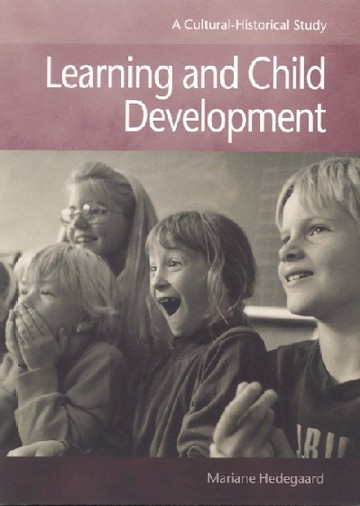
Learning and Child Development
A Cultural-Historical Study
A part of the subject areas Psychology and Pedagogics
More about the book
About the book
Learning and Child Development addresses all who have an interest in child psychology as well as in education from a cultural-historical perspective. The focus is on the relation between school teaching and the development of children's interest in and reflection about the world. Discussed in the first half of the book are cultural-historical and sociocultural theories about the relation between societal knowledge on the one hand, and children's learning and development of thinking and motives on the other. In the second half, a teaching project based on Vygotsky's principle of the Zone of Proximal Development is outlined. The project is based on the subject of history in the fourth and fifth grades and is described from the children's perspective. We follow three children's participation in this project where focus is placed on their conceptual learning, acquisition of thinking strategies and their development of motives and personality.
Table of contents
Chapter 1: Introduction:
Aim of the book
Contextual levels in the analyses of school children's psychic development
Children's conceptual thinking and motive development
Chapter 2: The significance of societal forms of knowledge and thinking for children's concept formation and thinking:
The anchoring of knowledge in societal practice
Societal knowledge and personal cognition
Societal forms of knowledge
The significance of the different kinds of knowledge for school teaching
Children's appropriation of subject-matter knowledge and its transformation into personal cognition and concepts
Subject-matter knowledge and its consequence for personal everyday concept formation and thinking modes
Knowledge forms, everyday cognition and education
Chapter 3: Thinking in a socio-cultural and historical perspective:
Localisation of thinking: In the mind or in social practice?
Thinking as a socio-cultural practice
Content and procedures of thinking - learning thinking modes
Chapter 4: Goals, motives, motivation and cognition:
The relationship between human needs and motives
Goals and formation of motives
Motive, cognition and the formation of personality
Motivation creates motives and motives create motivation
Chapter 5: Learning, development and social practice:
School age as a specific stage in child development
Apprenticeship learning and teaching
Learning activity and theoretical thinking
Combining situated learning and thinking with theoretical learning and thinking – 'The Double Move' in teaching
Chapter 6: The principles for conducting 'The Double Move' in teaching: Exemplified by a teaching experiment in the subject of history:
The zone of proximal development as a principle of learning
The teaching design: The educational experiment
Didactics of the teaching experiment
Chapter 7: Method:
The case study method
Observation of three children
Categories of interpretation for the case analyses
Chapter 8: Cecilie's learning activity in the fourth grade:
Objectives and description categories
Problem formulation phase
Model formulation phase
Model extension phase
Model variation phase
Construction and evaluation phase
Conclusion on Cecilie's development of motives, thinking and concept formation in the fourth grade
Chapter 9: Loke's learning activity in the fourth grade:
Problem formulation phase
Model formulation phase
Model extension phase
Model variation phase
Construction and evaluation phase
Conclusion on Loke's development of motives, thinking and concept formation in the fourth grade
Chapter 10: Cecilie in the fifth grade - greater independence:
Problem formulation phase
Model formulation phase: Model use for the Viking age
Model extension phase for the Middle Ages: Focus on the concept of society
Communicating with other children on the conceptualising of change in society
The numerous activities relating to the evaluation and extension of the model
Using the historical model of society to go beyond the study of history
Conclusion on Cecilie's development of motives, thinking and concept formation in the fifth grade
Chapter 11: Morten's learning activity in the fifth grade:
The phases of problem formulation and model use
Model extension phase for the Middle Ages: Focus on the concept of society
Communicating with other children on the conceptualisation of change in society
The numerous activities relating to the evaluation and extension of the model
Using the historical model of society to go beyond the study of history
Conclusion on Morten's development of motives, thinking and concept formation in the fifth grade
Chapter 12: Thinking, the formation of concepts and motives as socio-culturally based facets of personality:
The aims of this chapter
Traditions of subject methodology and their influence on children's thinking strategies
Each child's motives create individuality in his or her development
Societal and cultural practice as a basis for children's appropriation of personal thinking modes, concepts and motives
Appendix
Bibliography
Index
Press reviews
Stefanie Chye Mind, Culture, & Activity Journal
"... enriching current theoretical debates… Hedegaard's theorizing is ambitious and impressive. [This book] makes important contributions to both theory and practice ... [It] opens new horizons for educators and researchers alike. The data, meticulously described and rich in detail, is interesting and strikes many a chord with the experiences of educators ... her teaching project is a pioneering step… [The book is] a true contribution, and it will be of real interest to all those involved in the areas of education, psychology and child development."




